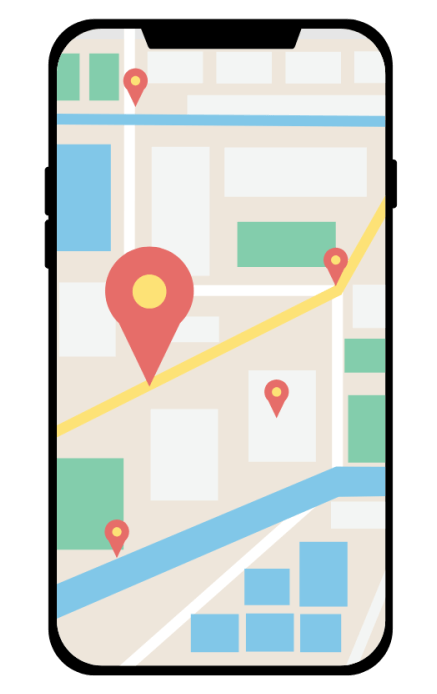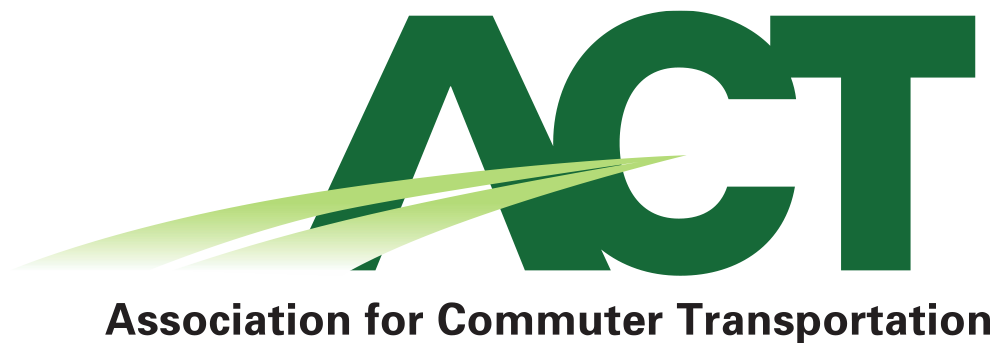Policy Priorities
Creating efficient and affordable transportation is key to strong, healthy communities and a thriving economy. Transportation Demand Management (TDM) offers cost-effective ways to improve mobility, reduce congestion, enhance health and safety, and boost economic growth by maximizing existing infrastructure.
Move People Efficiently

ACT advocates for people to get to jobs and other destinations as efficiently and safely as possible. We want all people to move freely through our transportation networks by optimizing mobility and relieving congestion.
Goals:
- Define and codify TDM into federal legislation. This will ensure federal grants such as CMAQ can be used for TDM programs, supporting both capital and operating projects.
- Advocate for legislation that strengthens and expands transportation fringe benefits.
- Support legislation for increased micromobility ownership and rental opportunities.
Leverage Technology and Partnerships

ACT supports investments in new technologies and business models to further our goal of moving people efficiently.
Goals:
- Support funding for services such as micromobility, microtransit, shared-use mobility services, and carpooling and vanpooling through public/private partnerships.
- Embrace innovative delivery models, incentivization programs, commute software, and expanding access to TDM programs and transit through technology advancements.
- Partner with organizations with similar interests to support community priorities and to advance our advocacy efforts and policy positions.
Strengthen Communities

ACT recognizes that all communities have unique needs and challenges. We can strengthen the resilience and economic activity of communities by supporting tailored transportation methods so that families and communities achieve freedom of choice and increased quality of life.
Goals:
- Support local TDM policy initiatives, pilots, and land-use decisions that help create increased transportation options, more housing, and lower the cost of living.
- Use TDM strategies to reduce congestion to support the movement of freight, economic development, and livable communities.
- Ensure transportation options are available to access jobs.
Definitions:
TDM (Transportation Demand Management) - The term ‘Transportation Demand Management’ means the use of strategies to inform and encourage travelers to maximize the efficiency of a transportation system, leading to improved mobility, reduced congestion, and improved air quality, including strategies that use planning, programs, operations, policies, marketing, communications, incentives, pricing, data, and technology.
TDM Strategy - The term ‘‘transportation demand management strategy’’ means the use of planning, programs, policy, marketing, communications, incentives, pricing, data, and technology to optimize travel modes, routes used, departure times, and number of trips.
CMAQ (Congestion Mitigation Air Quality Improvement Program) - As defined by the Federal Highway Administration, CMAQ is a federal funding program designed to "provide a flexible funding source to State and local governments for transportation projects and programs to help meet the requirements of the Clean Air Act. Funding is available to reduce congestion and improve air quality for areas that do not meet the National Ambient Air Quality Standards for ozone, carbon monoxide, or particulate matter (nonattainment areas) and for former nonattainment areas that are now in compliance (maintenance areas)."
Transportation Fringe Benefit - According to the IRS, Qualified Transportation Fringe Benefits, applies to the following benefits: a ride in a commuter highway vehicle between the employee's home and work place; a transit pass; and/or Qualified parking. An employer may provide an employee with any one or more of these benefits at the same time. Qualified transportation benefits can be provided directly by the employer or through a bona fide reimbursement arrangement.
